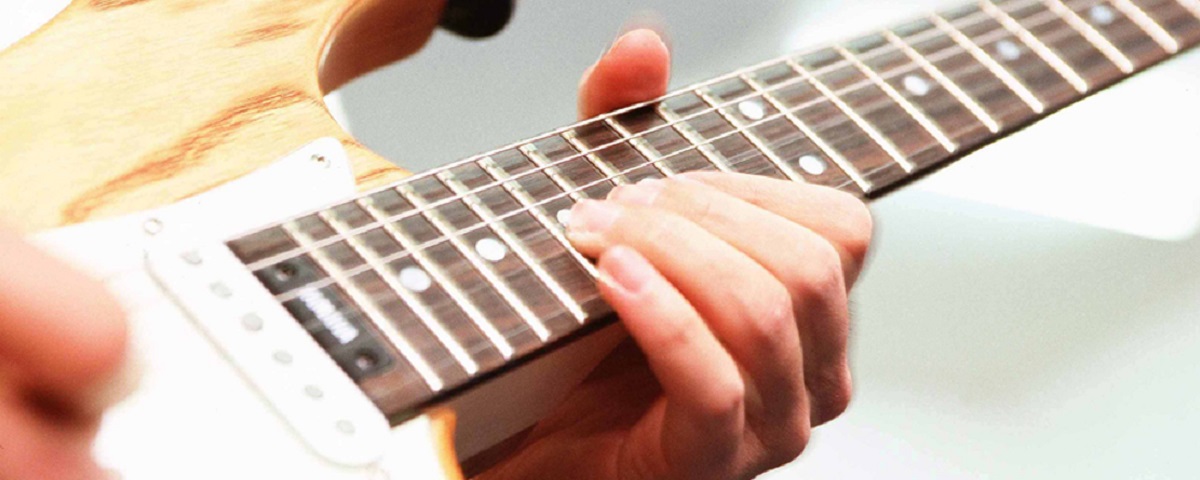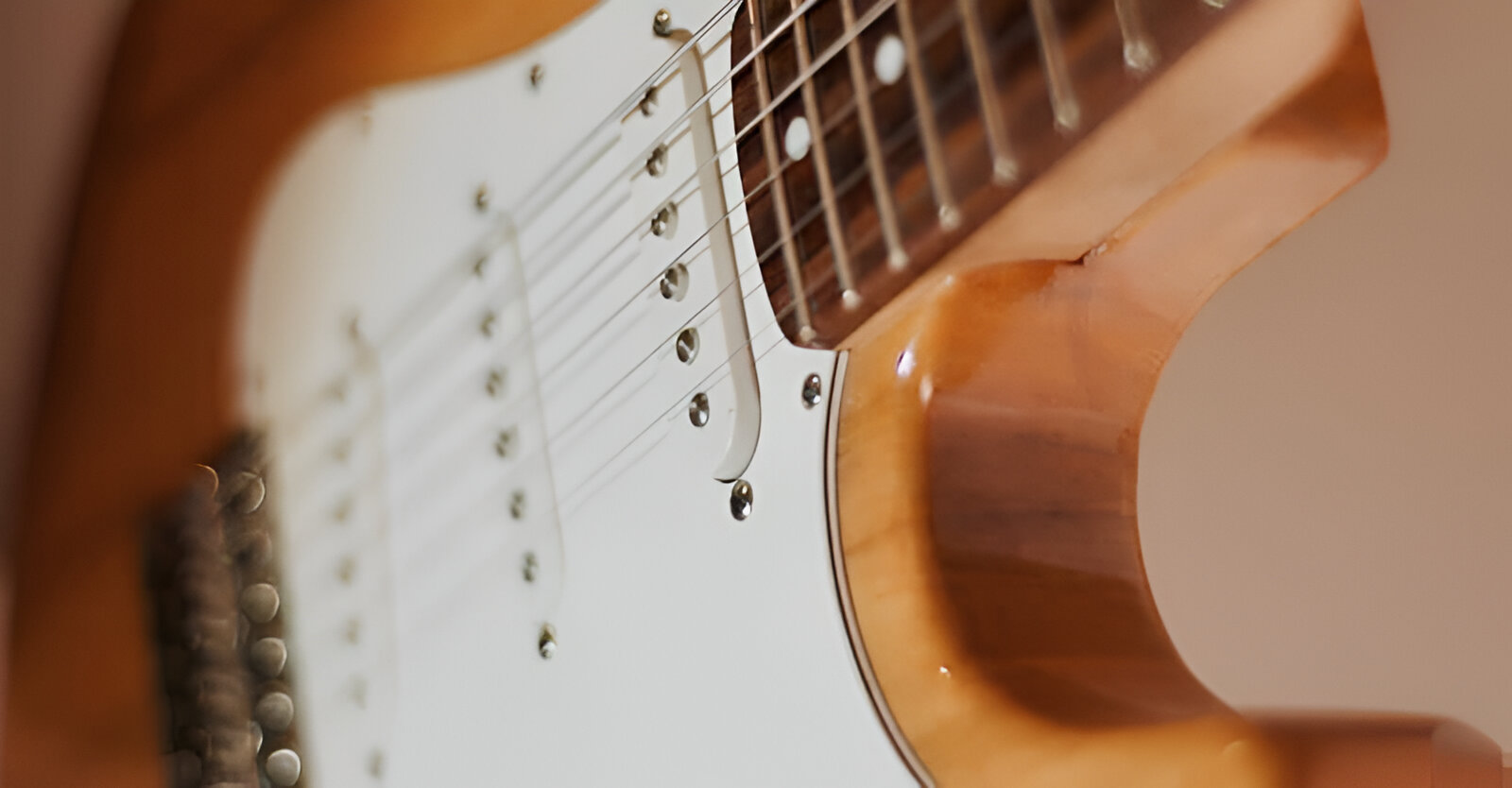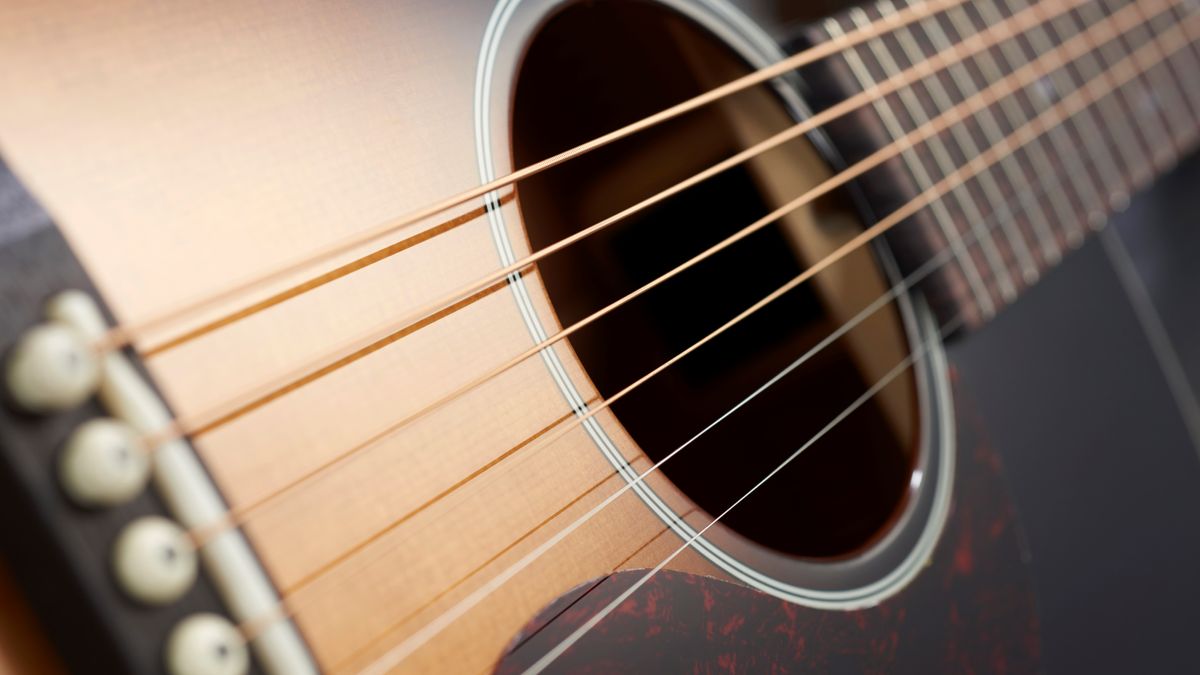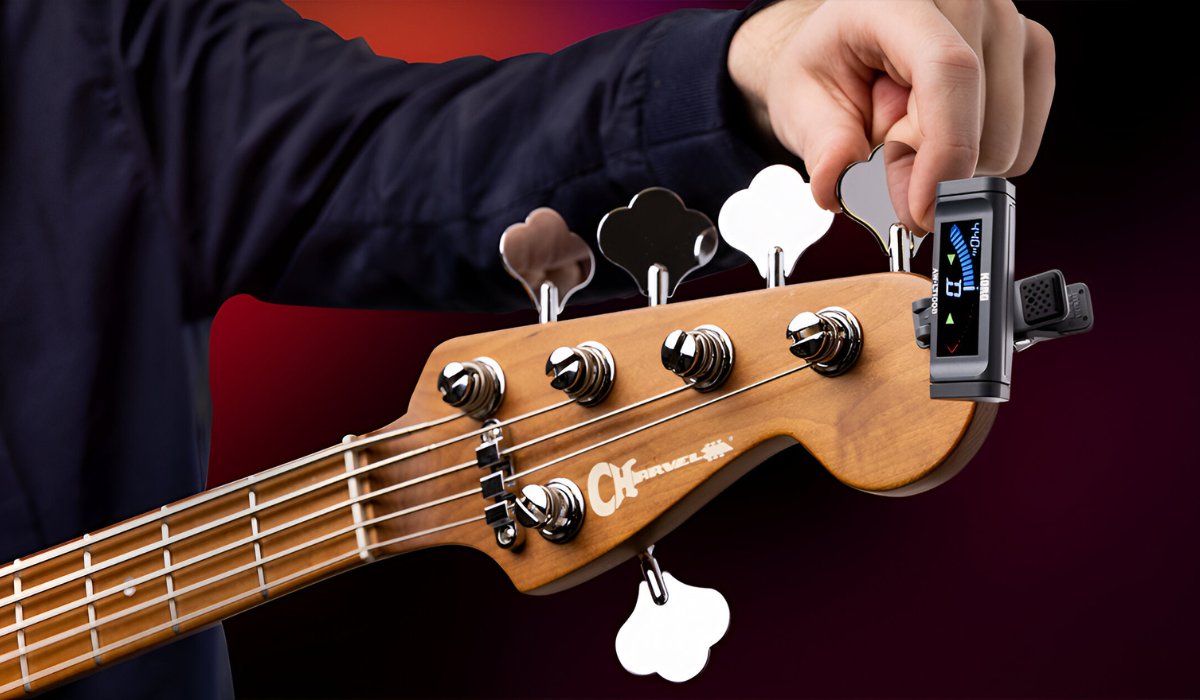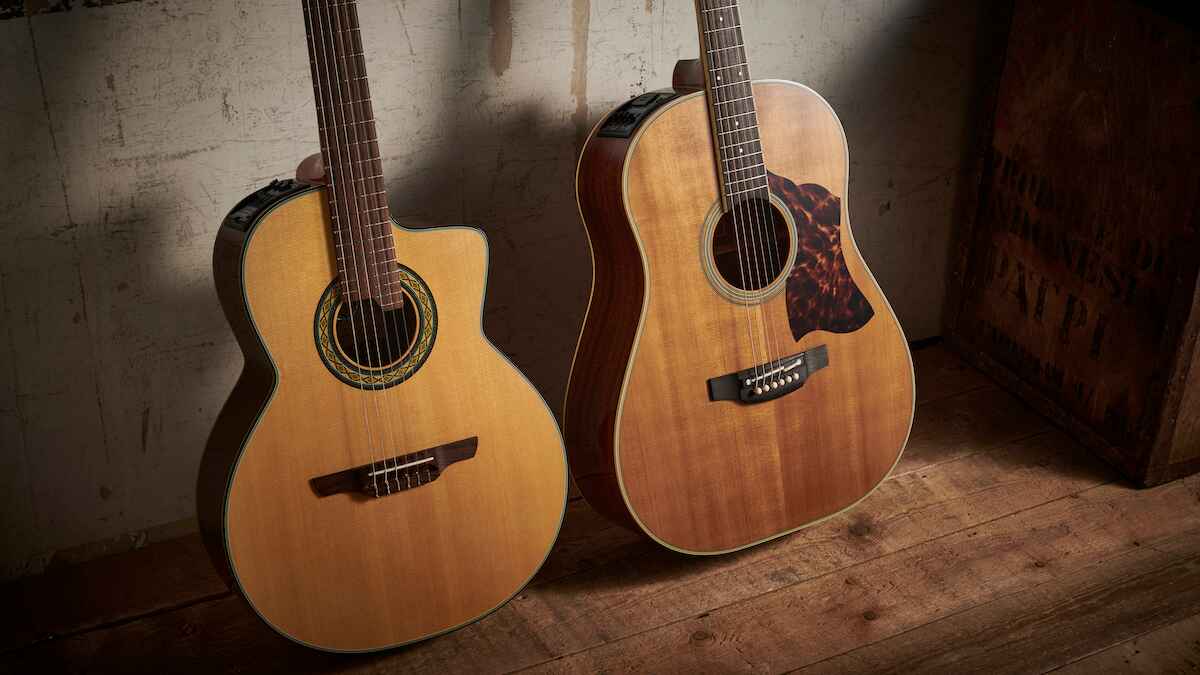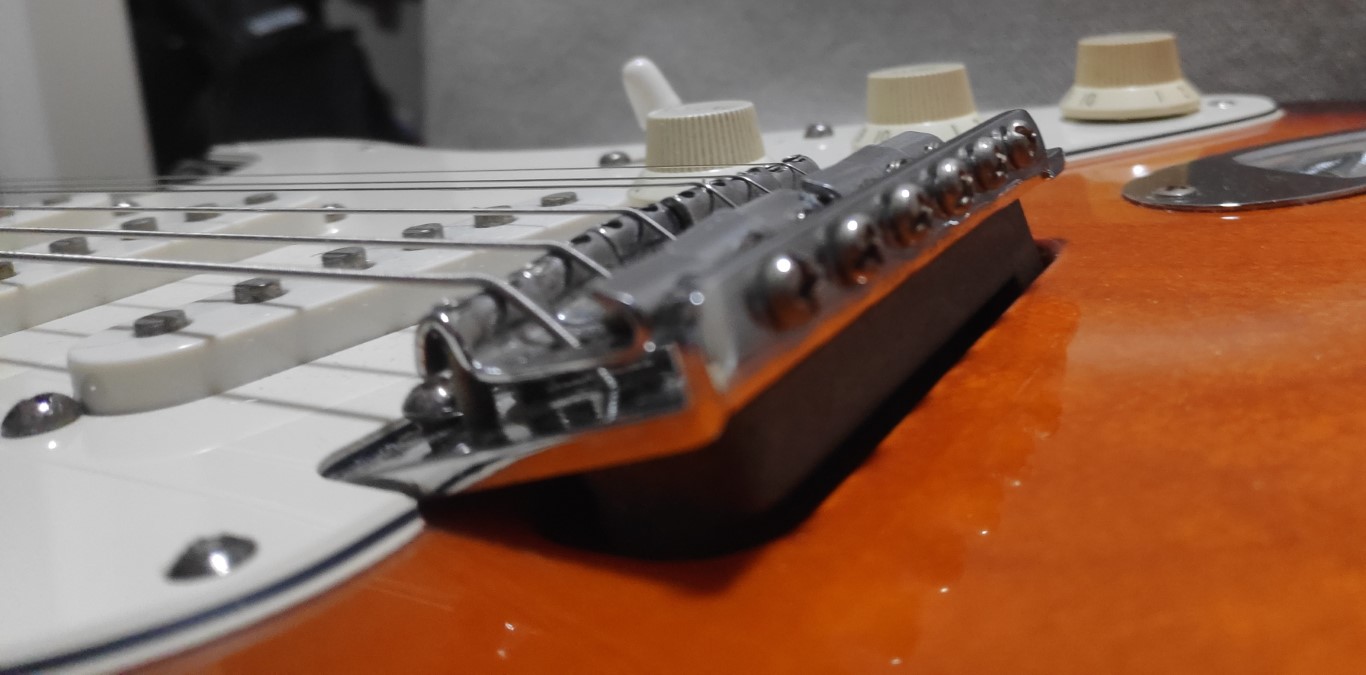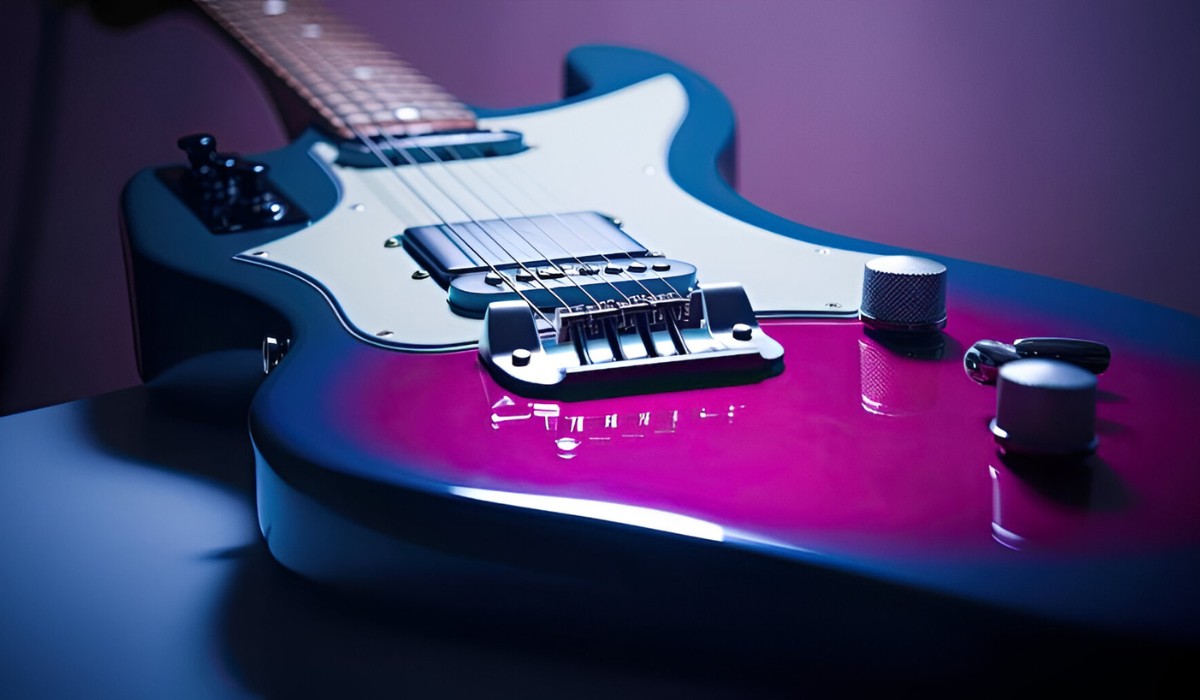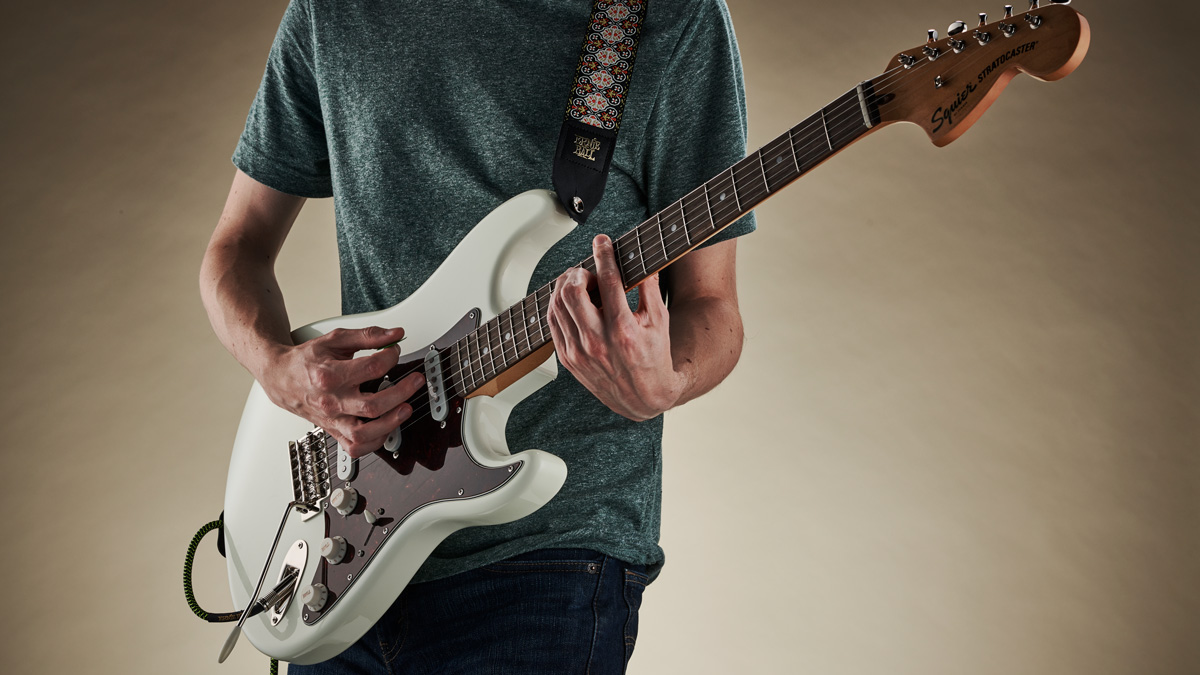Introduction
So, you've decided to embark on a musical journey and learn how to play the six-string electric guitar. Congratulations! Whether you're a complete beginner or transitioning from an acoustic to an electric guitar, this guide will equip you with the fundamental knowledge and techniques to kickstart your musical endeavors.
Playing the electric guitar is an exhilarating experience that offers endless opportunities for self-expression and creativity. From soulful blues to electrifying rock riffs, the versatility of the electric guitar makes it a compelling choice for aspiring musicians. As you delve into the world of electric guitar playing, you'll discover the sheer joy of producing a wide range of sounds, from gentle, melodic tones to powerful, distortion-laden chords.
In this comprehensive guide, we'll cover everything you need to know to get started on your electric guitar journey. From selecting the right guitar to mastering essential techniques and understanding the nuances of guitar effects, each section will provide valuable insights and practical tips to help you become a proficient electric guitar player. Whether you dream of performing on stage, recording your own music, or simply enjoying the therapeutic benefits of playing an instrument, learning the electric guitar is a fulfilling and rewarding pursuit.
Before we dive into the technical aspects of playing the electric guitar, it's important to emphasize the significance of patience and dedication. Learning any musical instrument requires time, practice, and perseverance. As you navigate through the various stages of your learning process, remember to embrace the challenges and celebrate your progress. With consistent effort and a positive mindset, you'll gradually build the skills and confidence needed to express yourself through this captivating instrument.
So, let's embark on this exciting journey together as we unravel the art of playing the six-string electric guitar. Whether you're drawn to the soul-stirring melodies of blues, the high-energy riffs of rock, or the intricate harmonies of jazz, the electric guitar has something to offer for every aspiring musician. Get ready to unleash your creativity, hone your skills, and embark on an enriching musical adventure with the six-string electric guitar.
Choosing the Right Guitar
Before diving into the world of electric guitar playing, it’s essential to select a guitar that aligns with your musical preferences, playing style, and budget. With a myriad of options available, choosing the right electric guitar can seem daunting, but understanding key factors can simplify the selection process.
When considering your first electric guitar, it’s crucial to strike a balance between quality and affordability. While it’s tempting to be swayed by flashy designs and brand endorsements, prioritizing a well-constructed instrument with a comfortable feel and versatile sound is paramount. As a beginner, opting for a solid-body electric guitar is a prudent choice, as it offers durability and ease of handling.
Furthermore, the tonal characteristics of the guitar play a pivotal role in shaping your musical expression. Different types of pickups, such as single-coil and humbucker, yield distinct tones, allowing you to explore a spectrum of sounds. Whether you’re drawn to the crisp, bright tones of single-coil pickups or the robust, powerful sounds of humbuckers, understanding these nuances will aid in selecting a guitar that resonates with your musical vision.
Additionally, the neck profile and scale length significantly influence the playability of the guitar. Experimenting with various neck shapes, such as C-shaped or D-shaped profiles, can help you determine the most comfortable fit for your hands. Likewise, the scale length, which affects string tension and fret spacing, contributes to the overall feel of the instrument. By trying out different guitars and assessing their ergonomic features, you can pinpoint the one that facilitates a smooth and enjoyable playing experience.
While aesthetics are undoubtedly appealing, prioritize the functional aspects of the guitar, such as the quality of the hardware, tuning stability, and overall craftsmanship. Assessing these attributes will ensure that your chosen guitar not only looks impressive but also delivers reliable performance, allowing you to focus on honing your skills without unnecessary technical hindrances.
Ultimately, choosing the right electric guitar involves a blend of personal preference, informed decision-making, and an understanding of the instrument’s sonic capabilities. By carefully evaluating the construction, tonal options, and playability of different guitars, you can make an informed choice that paves the way for an enriching and fulfilling musical journey.
Understanding the Parts of the Guitar
Before delving into the intricacies of playing the electric guitar, familiarizing yourself with its various components is essential. Understanding the anatomy of the guitar not only enhances your technical knowledge but also facilitates effective communication with fellow musicians and guitar technicians. Let’s explore the key parts of the electric guitar and their respective functions.
- Body: The body of the electric guitar serves as the primary housing for the instrument’s electronic components and contributes to its overall resonance. It also provides a platform for attaching the bridge, pickups, and control knobs, playing a crucial role in shaping the guitar’s tonal characteristics.
- Neck and Fretboard: The neck, typically crafted from sturdy wood such as maple or mahogany, supports the fretboard and frets. It houses the truss rod, which allows for adjustments to the neck’s curvature, influencing playability and intonation. The fretboard, often made of rosewood or ebony, features fret markers that aid in navigating the fingerboard.
- Headstock: The headstock accommodates the tuning pegs or machine heads, which enable precise tuning of the guitar strings. Additionally, it bears the guitar’s brand logo and contributes to the instrument’s aesthetic appeal.
- Pickups: Positioned beneath the strings, pickups capture the vibrations and translate them into electrical signals. Different types of pickups, such as single-coil and humbucker, offer distinct tonal characteristics, allowing for a diverse range of sounds.
- Bridge: The bridge anchors the strings to the body of the guitar, facilitating string height and intonation adjustments. It also transmits string vibrations to the pickups, influencing the instrument’s overall resonance and sustain.
- Control Knobs: Typically located on the guitar’s body, control knobs govern volume and tone settings. They provide the means to sculpt the guitar’s sound, allowing for adjustments to brightness, warmth, and overall output level.
- Toggle Switch: Found on guitars with multiple pickups, the toggle switch enables the selection of individual or combined pickup configurations, expanding the sonic versatility of the instrument.
Acquainting yourself with these fundamental components equips you with a deeper understanding of the electric guitar’s construction and functionality. As you progress in your musical journey, this knowledge will empower you to make informed decisions regarding instrument maintenance, upgrades, and tonal customization, ultimately enriching your playing experience.
Tuning Your Guitar
Ensuring that your electric guitar is properly tuned is fundamental to producing harmonious and accurate musical notes. The standard tuning for a six-string electric guitar, from the lowest-pitched string to the highest, is E, A, D, G, B, and E. Achieving and maintaining this tuning is essential for playing chords, scales, and melodies with precision and clarity. Here’s a step-by-step guide to tuning your electric guitar:
- Using a Tuner: A digital tuner is a valuable tool for accurately tuning your guitar. Simply pluck each string individually and adjust the tuning pegs until the tuner indicates the correct pitch for each string.
- Tuning by Ear: While using a tuner is recommended, developing the ability to tune your guitar by ear is a valuable skill. Familiarize yourself with the sound of each open string in standard tuning and use them as reference points to adjust the remaining strings accordingly.
- Checking Intonation: Once the open strings are tuned, it’s important to verify the guitar’s intonation. This involves assessing whether the notes played at the 12th fret are in tune with the open strings. If necessary, adjustments can be made to the bridge saddles to ensure accurate intonation across the fretboard.
- Regular Maintenance: Fluctuations in temperature and humidity can affect the tuning stability of your guitar. Regularly check and adjust the tuning to compensate for environmental changes, especially before practice sessions and performances.
Consistent tuning not only enhances the overall sound and playability of your guitar but also contributes to ear training, allowing you to develop a keen sense of pitch and intonation. Whether you’re exploring intricate melodies or unleashing powerful chords, a well-tuned guitar forms the foundation for a captivating and enjoyable playing experience.
Holding the Guitar
Establishing a comfortable and ergonomic posture while holding the electric guitar is crucial for facilitating unrestricted movement and minimizing physical strain during playing sessions. Whether you’re seated or standing, adopting the correct posture not only enhances your playing technique but also contributes to long-term physical well-being. Here’s a guide to holding the guitar with ease and efficiency:
Seated Position: When seated, position the guitar on your dominant leg, ensuring that the lower bout of the guitar body rests against your thigh. The neck of the guitar should be angled slightly upward, allowing for effortless fretting and strumming. Maintain a straight back and avoid slouching to promote a relaxed yet attentive posture.
Strap Adjustment (Standing Position): If you prefer to play the guitar while standing, using a guitar strap is essential for distributing the instrument’s weight and providing stability. Adjust the strap length to position the guitar at a comfortable height, allowing for easy access to the fretboard and controls. The strap should support the guitar securely, preventing it from sliding or shifting during performance.
Balance and Stability: Whether seated or standing, strive for equilibrium and stability while holding the guitar. Avoid excessive tension in your shoulders and arms, as this can impede fluid movement and lead to discomfort. Cultivate a relaxed and balanced posture, allowing your body to move freely as you navigate the fretboard and execute various playing techniques.
Fretting Hand Position: Proper hand placement on the fretboard is essential for executing chords and melodies accurately. Maintain a natural curve in your fretting hand, ensuring that your fingertips press the strings firmly against the frets without exerting unnecessary force. This facilitates clean note production and minimizes finger fatigue during extended playing sessions.
Strumming Hand Technique: Whether using a pick or employing fingerstyle techniques, the strumming hand plays a pivotal role in shaping the guitar’s sound. Position your strumming hand comfortably above the guitar’s soundhole or bridge, allowing for fluid and controlled strumming or picking motions. Experiment with different hand positions to discover the most effective and comfortable approach for your playing style.
By prioritizing a balanced and relaxed posture, you can optimize your playing experience and mitigate the risk of physical discomfort or strain. Embrace a posture that fosters freedom of movement and supports your musical expression, empowering you to explore the boundless potential of the six-string electric guitar with confidence and ease.
Basic Guitar Techniques
Mastering fundamental guitar techniques forms the cornerstone of your journey as an electric guitar player. These techniques not only lay the groundwork for more advanced skills but also cultivate dexterity, coordination, and musical expression. Here are essential techniques to focus on as you embark on your guitar-playing odyssey:
- Proper Fretting: Position your fingers immediately behind the frets to ensure clear and resonant notes. Apply sufficient pressure to the strings without straining your fingers, and strive for consistent finger placement to avoid unintentional string buzzing or muted notes.
- Efficient Picking or Strumming: Whether using a pick or your fingers, focus on producing even and articulate tones. Experiment with different pick gauges and strumming patterns to discover the nuances of sound production and develop a rhythmic foundation for your playing.
- Chord Transitions: Practice transitioning between basic chords smoothly and swiftly. Gradually increase the pace of your chord changes, ensuring that each transition is seamless and devoid of pauses or hesitations.
- Scale Exercises: Familiarize yourself with common scales, such as the pentatonic and major scales, to develop finger agility and melodic proficiency. Practice ascending and descending scales across the fretboard, paying attention to clarity and consistency in your note articulation.
- String Bending and Vibrato: Experiment with string bending to infuse your playing with expressive nuances. Additionally, work on incorporating controlled vibrato to add depth and emotion to sustained notes, enhancing your phrasing and musicality.
- Fretboard Navigation: Develop fluency in navigating the fretboard by practicing scale patterns, chord progressions, and melodic sequences across different positions. This fosters a comprehensive understanding of the instrument’s layout and facilitates seamless movement between notes and chords.
Consistent and focused practice of these foundational techniques lays a robust groundwork for your growth as a guitarist. Embrace each exercise with patience and dedication, gradually refining your skills and expanding your musical vocabulary. By honing these basic techniques, you’ll build a solid framework for exploring diverse musical styles and unleashing your creative potential on the six-string electric guitar.
Playing Your First Chords
As a novice electric guitar player, mastering your first chords marks a significant milestone in your musical journey. Chords form the building blocks of countless songs and serve as the foundation for rhythm playing and accompaniment. By familiarizing yourself with essential open chords, you’ll lay the groundwork for strumming along to your favorite tunes and composing your own music. Here’s a guide to learning and playing your first chords:
Begin with Basic Chords: Start by learning fundamental open chords such as E major, A major, D major, and G major. These chords are prevalent in a wide range of musical genres and provide an excellent starting point for developing chord proficiency.
Positioning Your Fingers: Pay close attention to the placement of your fingers on the fretboard. Ensure that each finger presses down on the appropriate string and fret, producing clear and resonant notes. Strive to maintain a relaxed hand position while fretting the chords, allowing for easy transitions between shapes.
Strumming Technique: Practice strumming each chord with a steady and even rhythm. Aim for consistent downstrokes and upstrokes, maintaining a balanced and flowing strumming pattern. Focus on achieving a clear and articulate sound with each strum, emphasizing the proper execution of the chord voicings.
Smooth Chord Transitions: Work on transitioning between different chords fluidly and efficiently. Practice shifting from one chord to another, ensuring that your fingers move in a coordinated manner to minimize pauses and maintain the rhythm of the music. Gradually increase the speed of your chord changes as you gain confidence and dexterity.
Strumming Patterns and Variations: Experiment with various strumming patterns and chord progressions to expand your rhythmic repertoire. Incorporate dynamics and accents into your strumming, infusing the chords with energy and expression. Additionally, explore alternative voicings and embellishments to add depth and character to your chord playing.
Ear Training and Song Application: Train your ears to discern the sound of each chord and its role within a song. Listen to music attentively, identifying the chord progressions and applying your knowledge to play along with your favorite tracks. This practical application enhances your musical understanding and reinforces your chord-playing skills.
By dedicating time to mastering your first chords, you’ll lay a solid foundation for further exploration and skill development. Embrace the process with patience and persistence, and celebrate each chord you conquer, knowing that you’re one step closer to unlocking the full potential of the six-string electric guitar.
Learning Scales and Melodies
Delving into scales and melodies opens a world of melodic expression and improvisational prowess for electric guitar players. By mastering scales and delving into melodic phrasing, you’ll expand your musical vocabulary, develop finger dexterity, and hone your ability to craft captivating musical passages. Here’s a guide to embarking on the journey of learning scales and melodies on the electric guitar:
Basic Scale Patterns: Begin by familiarizing yourself with fundamental scale patterns, such as the pentatonic and major scales. These versatile patterns form the basis for countless melodies and solos, serving as essential tools for improvisation and musical exploration.
Finger Independence and Coordination: Practice scale exercises to enhance finger independence and coordination. Gradually increase the speed and accuracy of your scale runs, ensuring that each note is articulated clearly and evenly. Focus on maintaining a relaxed hand position to facilitate smooth and effortless execution of the scale patterns.
Melodic Phrasing: Experiment with crafting melodic phrases within the context of the scales you’re learning. Explore variations in note duration, articulation, and dynamics to imbue your melodies with expressiveness and emotion. Embrace the nuances of phrasing, such as bends, slides, and vibrato, to infuse your playing with character and personality.
Ear Training and Musical Context: Train your ears to recognize the sound of each scale degree within a musical context. Listen to diverse genres of music and identify how scales are utilized to create melodies and solos. This active listening fosters a deeper understanding of melodic construction and empowers you to apply these principles to your own playing.
Exploration of Modal Scales: Venture into modal scales, such as the Dorian, Mixolydian, and Aeolian modes, to expand your melodic horizons. Each mode offers distinct tonal characteristics and emotional qualities, providing a rich palette of sounds for crafting evocative and captivating melodies.
Integration with Backing Tracks: Practice playing scales and crafting melodies over backing tracks in various keys and styles. This interactive approach hones your ability to navigate the fretboard, improvise melodically, and develop a keen sense of musical phrasing within a supportive harmonic context.
By immersing yourself in the exploration of scales and melodies, you’ll unlock a wealth of creative possibilities and elevate your musical expression on the electric guitar. Embrace the process with curiosity and enthusiasm, allowing the discovery of new scales and the crafting of captivating melodies to fuel your artistic growth and passion for the instrument.
Using Guitar Effects
Exploring the realm of guitar effects opens up a sonic playground for electric guitar players, allowing for boundless creativity and sonic experimentation. Whether shaping your tone, adding depth to your sound, or crafting otherworldly textures, understanding and utilizing guitar effects can elevate your playing to new heights. Here’s a guide to navigating the diverse landscape of guitar effects and integrating them into your musical endeavors:
Understanding Effect Categories: Familiarize yourself with various categories of guitar effects, including distortion, overdrive, modulation, delay, reverb, and more. Each effect category offers distinct sonic enhancements, from adding warmth and sustain to creating ethereal ambiance and rhythmic movement.
Effect Pedal Selection: Build a collection of effect pedals that align with your musical preferences and playing style. Begin with foundational pedals such as overdrive/distortion, modulation (chorus, phaser, flanger), and time-based effects (delay, reverb) to establish a versatile sonic palette.
Signal Chain Configuration: Arrange your effect pedals in a logical signal chain to optimize their impact on your overall tone. Experiment with different pedal sequences to determine the most effective arrangement for achieving your desired sound, considering factors such as gain staging and tonal balance.
Expression and Dynamics: Embrace the expressive potential of guitar effects to convey emotion and intensity in your playing. Utilize effects such as wah-wah, volume pedals, and dynamic processors to infuse your performance with dynamic shifts and nuanced tonal variations.
Exploration of Ambient Textures: Delve into ambient effects such as reverb and delay to create expansive soundscapes and atmospheric textures. Experiment with feedback, decay, and spatial positioning to sculpt immersive sonic environments that enhance your musical compositions and improvisations.
Creative Sound Design: Use effects to craft unique and unconventional sounds that push the boundaries of traditional guitar tones. Experiment with signal manipulation, stacking effects, and sonic experimentation to unlock new sonic frontiers and expand your sonic repertoire.
Integration with Performance: Seamlessly integrate guitar effects into your live performances and studio recordings to enhance the sonic depth and impact of your music. Utilize effects judiciously to complement the musical narrative and elevate the emotional resonance of your compositions.
By embracing the diverse palette of guitar effects, you’ll embark on a sonic odyssey that amplifies your artistic expression and musical vision. Embrace the versatility and transformative power of effects, allowing them to become integral tools in shaping your sonic identity and enriching your musical storytelling on the six-string electric guitar.
Conclusion
Congratulations on embarking on the captivating journey of learning to play the six-string electric guitar. As you’ve navigated through the essential aspects of guitar playing, from selecting the right instrument to exploring the sonic possibilities of effects, you’ve laid a solid foundation for your musical growth and exploration. The knowledge and skills you’ve acquired provide a springboard for further development and artistic expression.
Remember, the path to mastery is a continuous and enriching adventure, marked by dedication, curiosity, and a spirit of creative exploration. Embrace each practice session as an opportunity to refine your technique, deepen your musical understanding, and express your unique voice through the instrument. Whether you aspire to perform on stage, compose original music, or simply derive joy from playing, the electric guitar offers a boundless canvas for your musical aspirations.
As you progress in your musical journey, cultivate a supportive community of fellow musicians, seek inspiration from diverse genres, and remain open to new learning opportunities. Your musical evolution is a dynamic and personal odyssey, and every challenge you encounter is an opportunity for growth and self-discovery.
Above all, cherish the joy of playing the electric guitar and the profound connection it fosters between you, your instrument, and the music you create. Let your passion for music propel you forward, and let the six-string electric guitar be a conduit for your artistic expression and emotional resonance.
May your musical endeavors be filled with inspiration, creativity, and the fulfillment that comes from sharing your unique voice with the world. Embrace the journey, savor each musical moment, and let the electric guitar be a faithful companion on your path to musical excellence and self-discovery.







